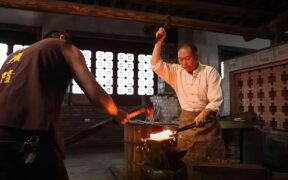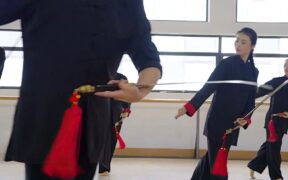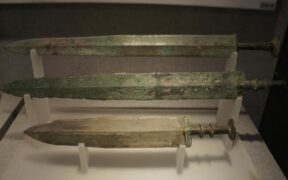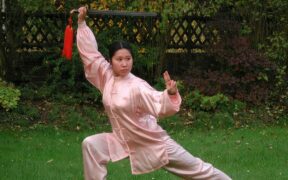Our content features commercial links to our products, committed to transparent, unbiased, and informed editorial recommendations. Learn More
Chinese Sword Dance: A Tale of Beauty, Art, and History
NO AI USED This Article has been written and edited by our team with no help of the AI
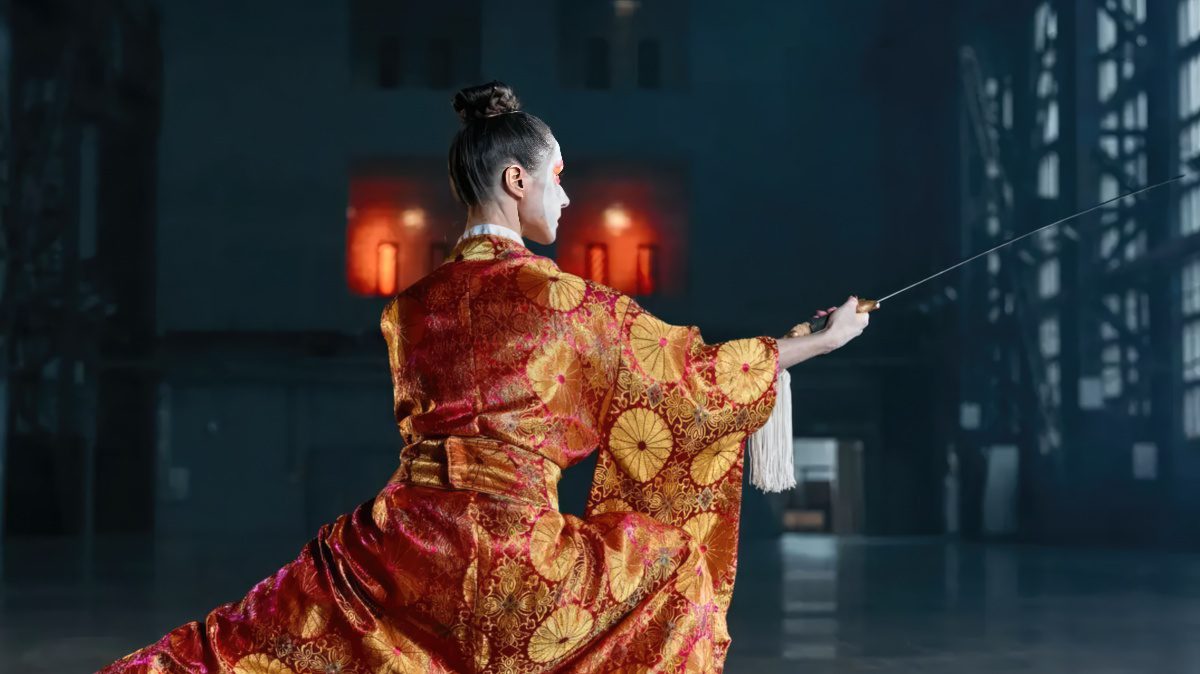
Sword dancing is a traditional form of cultural expression through graceful and awe-inspiring art that involves performers using their swords as props in various dance routines. A prime example of a sword dance that reflects its country’s culture is the Chinese sword dance.
This traditional piece of Chinese history has been practiced well over a millennium. It is elegant and impressive and has roots in Chinese martial arts. This article will thoroughly explain its meaning, types, techniques, rich history, and modern cultural meaning.
What is the Chinese Sword Dance?
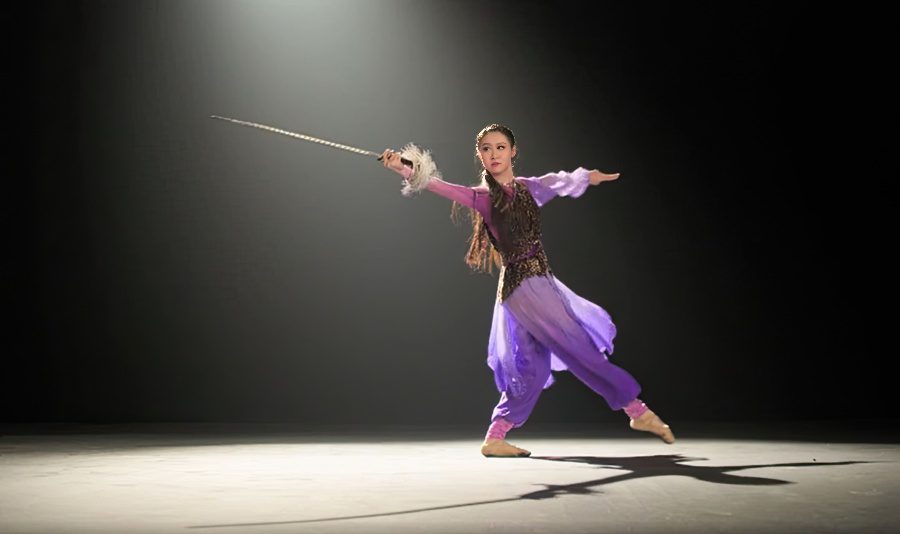
Chinese sword dances, or Jian Wu, originated as an army training exercise involving swords and spears but has since developed into a complex acrobatic performance. The Chinese opera had four traditional dances, one of which was called Jian Wu and used a sword. Each dance had a significant role in the operas, serving as a reminder of past wars and the importance of sword martial arts, which were the pinnacle of the Chinese soldier community.
“There was a pretty woman named Gongsun in the years past; When she did her Sword Dance, the effects were striking and vast. Like still mountains, all spectators were spellbound, petrified; It seemed Heav’n and Earth, with her ev’ry move, were unified, So dazzling and bright as down the ‘Nine Suns’ Hou Yi shot – O Mighty and fast as the Gods rode their dragon-chariots! As she lept up, like an angry thunder-bolt, the Dance began; Like frozen green waves, the cool blade was ev’rywhere at the end.”
– Du Fu on watching the Sword Dance
The Chinese also found a spiritual application for sword dancing in their attempts to have meaningful conversations with the afterlife, namely with any restless ghosts that might be causing problems in the home.
The true art of sword dancing encompasses a wide variety of styles. They emphasize speed and strength with signs of relaxation and flexibility at the same time. Several Chinese swords and other weapons are utilized in each performance.
During a solo performance, a Jian is typically used with slower, more dramatic movements, whereas shorter Dao swords are employed at a very fast tempo. The dancer must be very agile and athletic to perform the required motions of each dance style.
Popular Types of Chinese Sword Dancing
Chinese Sword dancing has branched out into various subgenres over time, all of which have their signature moves and aesthetics. Wudang sword dance, Longmen sword dance, and Shaolin sword dance are the three most well-known types of Chinese sword dance today.
Wudan Sword Dance
The Wudang Mountains in central China are the spiritual home of the Wudang sword dance. Graceful footwork and fluid motions are hallmarks of this technique. The Dao, a curved Chinese sword, is commonly used in these displays.
Longmen Sword Dance
The Longmen Grottoes are a group of Buddhist cave systems in Henan Province, China, where the Longmen sword dance choreography first emerged. This technique is characterized by complex footwork and acrobatic maneuvers. The Jian, a straight-bladed Chinese sword, is commonly used for this dance instead.
Shaolin Sword Dance
The famed Buddhist Shaolin Temple in Henan Province is the birthplace of the Shaolin sword dance. The Jian or Dao is frequently used in the quick, dynamic movements that define this technique with lighting-fast strikes that come after years of training in these temples. A very popular sword is a flexible Nandao sword, sometimes made of plastic.
Main Chinese Sword Dancing Techniques
Mastering the art of Chinese sword dance demands a great deal of dedication and time. It is very similar to Chinese Wushu or Kung Fu training but can also resemble the Tai Chi fluid movements. Chinese Sword dancing has a few fundamental moves, which usually go in this order during the presentation:
- Sword salute – the sword is raised over the head, then lowered to the breast in a salutation to the audience.
- Sword draw – the sword is drawn from its sheath in a single, fluid action, known as the “draw.”
- Sword thrust – the blade is thrown forward, with the edge facing the spectators.
- Sword spin – the performer creates a magnificent visual impact by spinning the sword in their hand or on the ground.
- Sword block – a demonstration of the defensive powers of the sword in which the performer employs the blade to fend off an imaginary attack.
Chinese Sword dancing can be performed while on the move or stationary, called Xing Jian or Zhan Jian. The dancers’ movements in the dance with a moving sword should be fluid and adaptable, like the earth’s elements, complementing the unceasing snakelike motion of the sword. The standing sword dancing emphasizes speed and power while maintaining grace and balance.
The tassel on the Chinese sword plays a significant role in the performance of the Chinese sword dance. This rope, tied around a part of a Chinese sword, is aesthetically beautiful and culturally significant. In addition, the Chinese sword with rings is primarily used to create enticing and dramatic sound effects.
Chinese Sword Dance Origins & History
Historically, martial artists and common troops performed the Chinese sword dance as a means of combat training. Despite the name, other weapons, such as the long spear, may have been utilized in this early form of Chinese dance.
One of the earliest examples, and perhaps the origins of the Chinese sword dance, can be traced back to Ancient China, well before the Tang dynasty, as is commonly assumed today. As we learn in the School Sayings of Confucius, Confucius’s disciple Zi Lu frequently swung the sword in dance-like movements in front of his teacher. Around this period, the first true Chinese swords appeared and quickly gained widespread popularity.
The Jian was the first sword to be used in these dances. Larger and more robust varieties of swords, which could be forged more easily and utilized efficiently in battle, would come with the arrival of the Han Dynasty when metallurgy was at its best. Straight but single-edged Dao blades were commonly used for warfare.
As a result of these developments, the Jian came to play a central role in the Chinese sword dance, which had developed steadily over time as a form of martial art and entertainment activity and would reach its peak during the Tang Dynasty.
Tang Dynasty – Official Birth of Chinese Sword Dance
Throughout the Tang Dynasty, the ability to sing and dance was highly prized by everyone, from the Emperor to commoners. In this period of China, a time with more than 100 large-scale dances, the performance of the Chinese sword dance reached its pinnacle, and some recognized it as the birth of the Chinese sword dance.
The Tang Dynasty (618 – 907 AD) was a golden era of Chinese history and the real and official birth of the Chinese sword dance. It developed fully in Chang`an, the capital of China at the time. It was a ritualistic and graceful sword or weapons martial arts style that both males and females could perform.
It started as a way for Emperor Taizong to keep a fresh memory and maintain the martial vigilance in peacetime achieved after years of battle. These dances were truly spectacular and sometimes even choreographed by Emperor Li Shimin, who fought in many prior battles.
The sword dances that emerged in this era can be separated into three main groups as they were done at the time:
- Martial Dance – a Chinese sword dance to keep the warrior martial art spirit high and active. A popular play was Prince Qin’s Cavalry, a performance using 120 dancers, 100 musicians, and a large choir of around 100 people with war chariots and soldiers.
- Civil Dance – a Chinese sword dance in which the Emperor aimed to govern the country by civil virtue after gaining political power by force. These dances were slower, combining swords at times with beauty and elements of reality, fantasy, and spiritual worlds, which had ornaments, music, and an abundance of female dancers.
- Hu Dance – a type of Asian dance that existed outside the borders of Chang`an and came from the Hu people through the silk road. It quickly became very popular throughout China and sometimes involved swords.
The heyday of the Chinese sword dance died out slowly with the fall of the Tang Dynasty. The Ladies Dancing Team and Children Dance Team of the Imperial Court were examples of the period’s growth in the Song Dynasty (960-1279). However, its scale was never as grand as it was during the Tang Dynasty.
Cultural Significance & Modern Adaptations
The art of Chinese sword dancing is steeped in history and tradition, having served equally religious and ceremonial functions. Sword dance was a popular type of entertainment at ancient Chinese weddings and other celebrations, thought to bring the happy couple good fortune and a long life together.
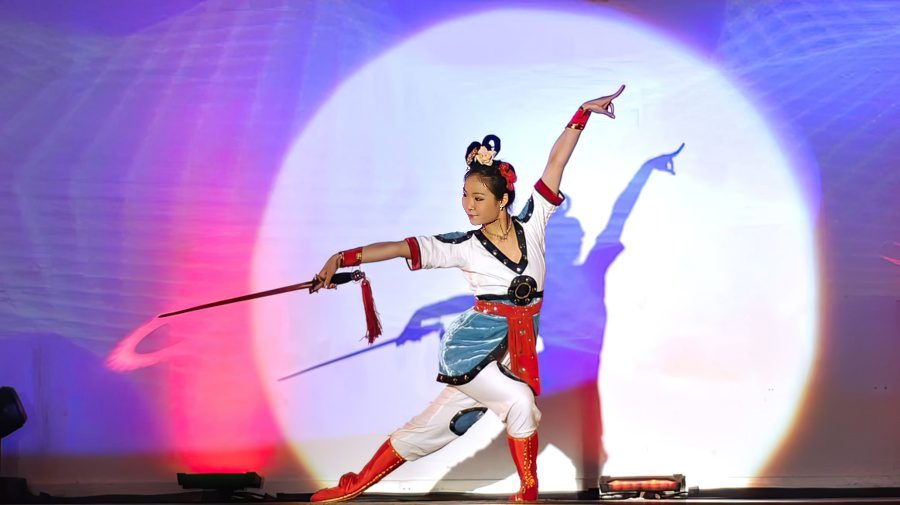
Buddhism and Taoism, the two largest religions in China, have connections to sword dancing. The sword was considered a holy relic that could safeguard the sanctuary from attack and drive away evil spirits. That is why sword dancing was done in some temples as a form of worship to the gods and an appeal for their shelter and favor.
Sword dancing has deep roots in Chinese martial arts, in addition to its religious and ceremonial functions. Chinese sword dancing was widely performed to develop one’s martial arts skills because many of the maneuvers and methods are comparable to those utilized in Chinese martial arts.
Chinese Sword dancing has evolved and adapted like many other classical art forms. It has evolved into new and exciting forms in the present day through fusion with other dance disciplines, including modern dance movements such as hip-hop. Sometimes the use of smoke, fire, and LED lights are added to make the dance more dramatic and aesthetically appealing.
